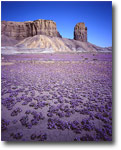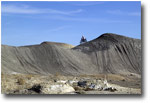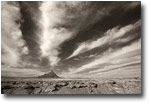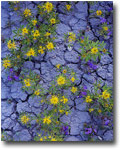 |
 |
||||
The issue is currently being reviewed by the Bureau of Land Management and your voice can make a difference! You can read the proposal and help lobby for a fair solution at www.factorybutte.org. If you haven’t been to this wonderful part of the West yet – make sure it’s on your list of places to visit. Also be sure to stop by Mesa Farm to meet Randy and sample some of his home-made bread and cinnamon rolls – the best you’ll find anywhere. I spoke with Randy on behalf of NPN to get a better understanding of the issues at hand and what we Nature Photographers can do to make sure our interests are represented in the discussion. NPN: What brought you to Utah, Randy? RR: I was born and raised in Yankton South Dakota. I moved to Salt Lake City in the early 70s. I felt that Salt Lake City offered financial opportunity. Southern Utah had also caught my eye. I was awed by the incredible natural beauty. It was so different from the rolling hills, corn fields and Missouri River valley around Yankton. NPN: You own Mesa Farm in Caineville, the only farm in the area dedicated to growing organic vegetables. What made you turn to this type of farming? RR: I became interested in growing vegetables when I was four years old. My grandmother would take me to her garden and show me the process. In the late 60s I ran into a magazine produced by Robert Rodale. It was called Organic Gardening and Farming. It was an amazing publication that taught sustainable farming practices. I was hooked. I am completely convinced that the only hope for our culture will be found in practicing sustainable living. Sustainable living is simply living according to the recognition that we belong to the planet, the planet does not belong to us. It became my dream to one day own a small sustainable farm. Hence Salt Lake City and the quest for finances. It took quite some time to prepare myself financially and spiritually. But, here we are today, working to build a sustainable farm in beautiful Wayne County. NPN: What can you tell us about Caineville - the place and its history? RR: Caineville was settled by the Mormon pioneers. It was at one time the largest community in Wayne County. The harsh conditions and an ecological disaster caused the community to migrate away. The land around Caineville, and specifically the Factory Butte region, has been referred to by some as the “baddest of the badlands”. From my understanding it is probably the baddest badlands in North America and may well be in the top ten badlands worldwide. The topography is rugged. The temperatures are extreme ranging from 119 F in the summer to more than -20 F in the winter. The area receives less than six inches of rain annually, most of this coming in the form of flash flood producing thunder storms. The gray hills are composed of Mancos shale. It is the remnants of the ancient primordial ocean. The soil is the most highly erosive soil on the Colorado Plateau. The chemical composition makes it a highly polluting agent when it enters the water ways. It contains high levels of sodium and selenium just to mention a few. NPN: And despite it all, you and many like you come to these places for unique their natural beauty, however the unusual terrain appeals to those who seek other forms of recreation too. Can you tell us about the current threat of off-road vehicles? RR: In the early 70s the off road vehicle began its rise in popularity. Some of the local people began to use the extreme topography of the area as the medium for their motorized enjoyment. It seemed the perfect place to ride. There were no rocks or trees and the steeply eroded hills were great for providing thrills on the machines. And unfortunately, the reputation of the place began to spread just as the popularity of the machine spread across the nation. Tentative studies are indicating that the soils from the steep slopes that are being disturbed by the ORVs are eroding at least 300% faster than the natural rate. This number could mean that as much as 50 tons of soil is unnaturally eroding each year from each acre of disturbed hill slope. The tire tracks left by the ORVs remain visible for at least two years and probably closer to ten years. These tracks leave the area’s natural beauty scarred. The wheels of the machines grind the vegetation into the ground. Studies show that a two wheel machine moving at five miles per hour will disturb more than 10,600 sq. feet of soil per hour. The disturbed soils blow on the frequent winds. It simply is not a pretty sight. NPN: What’s being done to address the issue? RR: The Bureau of Land Management has known for more than twenty years that there is a problem out here. They have known that the disturbances generated by the machines do not conform to the agencies mandates to prevent or at least reduce to a minimum the negative impact generated by them. In the Early ‘80s the BLM decided that the damage generated by the machines was substantial enough to warrant action. The BLM designated 640 acres as a play area and asked the off road community to voluntarily restrict their intensive motocross type riding to these 640 acres. The motocross type riders did not voluntarily restrict themselves and the BLM did nothing to encourage them to do so. The off road community, supported mostly by lack of scientific data and misinformation, is claiming that little damage is being caused by their activity. They are claiming that restricting open riding to roads and trails is denying them access to the area. They fail to mention the fact that 83% of the land in this district is within one mile of a road. The off road community is vocal and organized. They have been successful at convincing the BLM to continue to allow them unrestricted access to more than 100,000 acres surrounding Factory Butte and North Caineville Mesa. NPN: What are you proposing as a fair solution? RR: Those of us on the conservation side of the issue believe that the BLM should exercise its multiple use mandates and protect the natural resources of the area so that all users can enjoy the area. We have put forward a proposal that will allow nearly 2000 acres to remain open to unlimited riding. This proposal also provides the off road community the privilege to use the many existing roads and trails within the area as access points to the resources of the area. Some in the off road community claim that no one but the off roaders are interested in the area. They claim that the number of riders using the area deserve the unlimited access they have always enjoyed. They fail to mention the fact that the BLM did a study in 2000 that indicated that less than 500 people were using the area for the extreme sport of motocross type riding. NPN: As nature photographers we’d like our voice to be counted as users of these public lands. What can we do to help establish a fair multi-use plan? RR: The BLM is in the process of building and releasing a Resource Management Plan that will provide management direction. We are deeply involved in the process but we need the support of the conservation minded community. Those of us on the conservation side need to voice our opinions. We will lose our natural heritage unless we become involved. A group of us have built a web site that contains more information and links. Please visit www.factorybutte.org and send your opinions to the provided links. Encourage everyone you know to become involved. We are coming down to the final days of the decision process and your support regarding this issue will make the difference. Your support will cause the BLM to protect the Factory Butte region and its amazing beauty. Additional Web Resources Editor's note - view more of Rick Dunn's photography on his website at www.rickdunn.net. GT-NPN 0440 Comments on NPN landscape photography articles? Send them to the editor. Guy Tal resides in Utah, where most of the Colorado Plateau's breathtaking grandeur can be found, and where issues of preservation and land-use are among the most prominent on the political agenda. Guy's large format photography can be viewed on his website at http://scenicwild.com. | |||||
|
|
|||||




